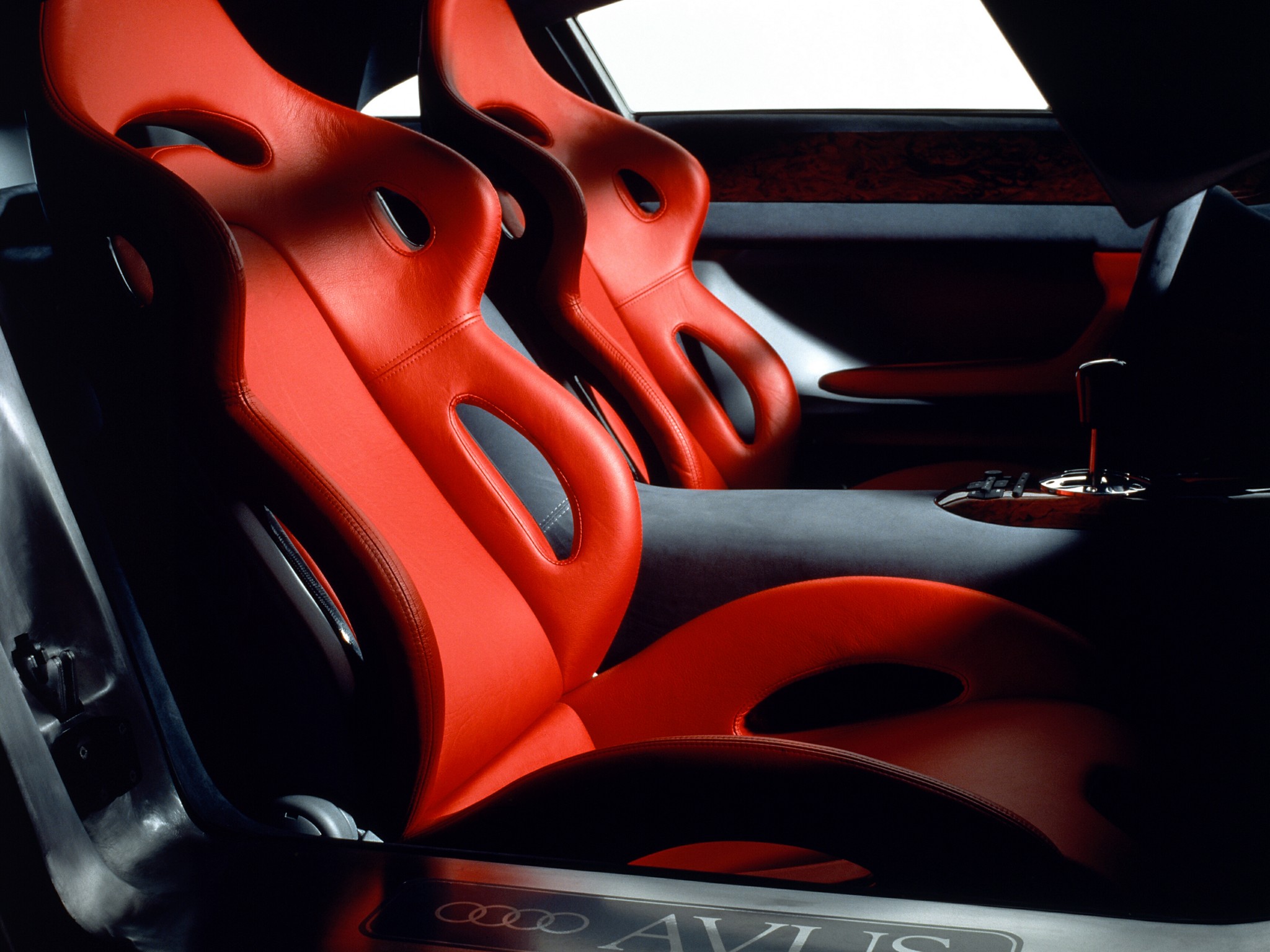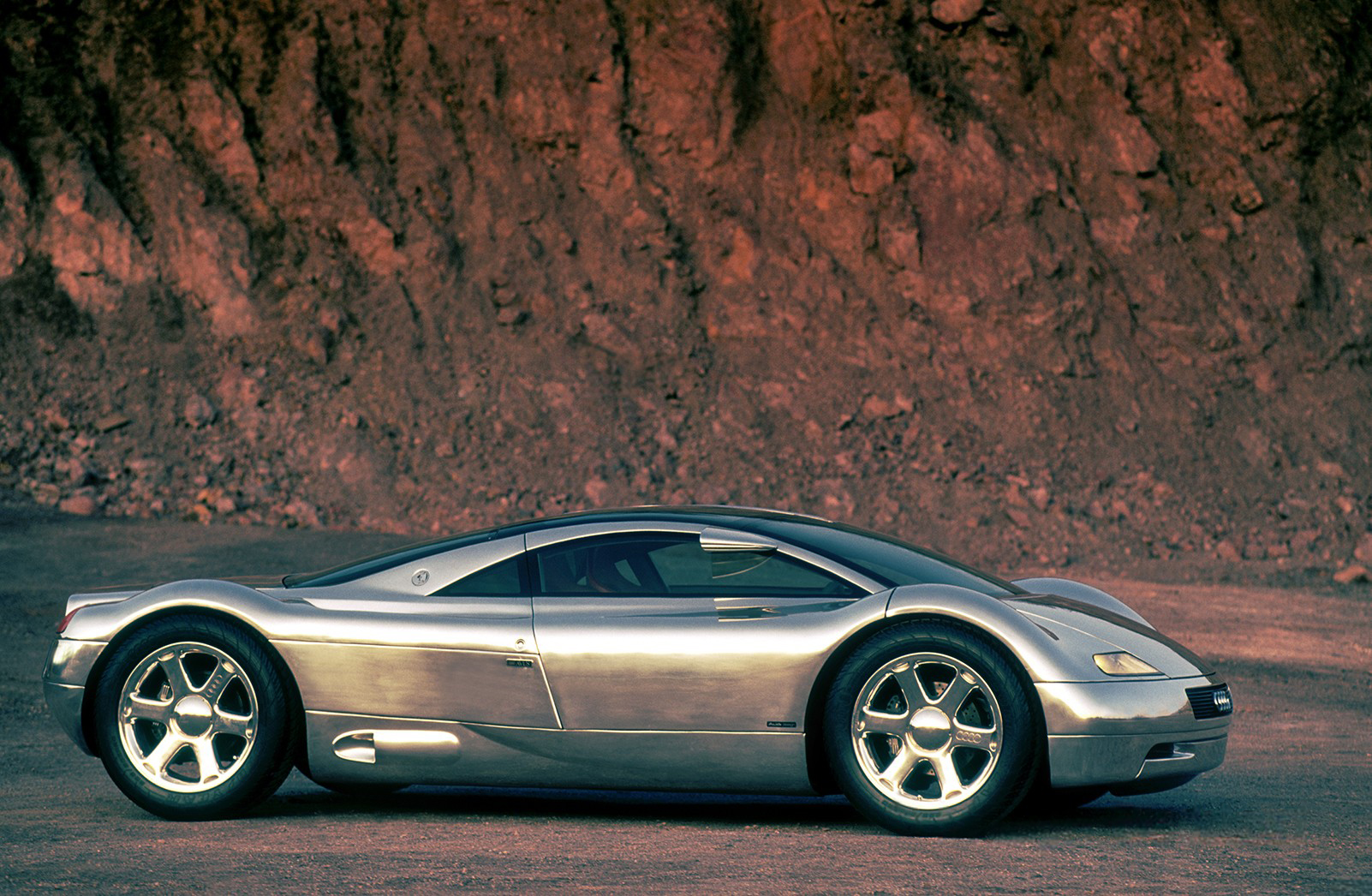Photo credit: Audi, Wheelsage
Michelangelo always insisted that every block of stone has a statue inside it and that it is the task of the sculptor to discover it by removing the superfluous from around it to bring it out into the open. The same can also be said for the Avus: Audi’s first all-aluminium car was completely clothed in aluminium when it first saw the light of day in 1991. Seen today, almost thirty years later, this prototype offers a strength and charm worthy of the greatest sculptures by the great Italian artist.
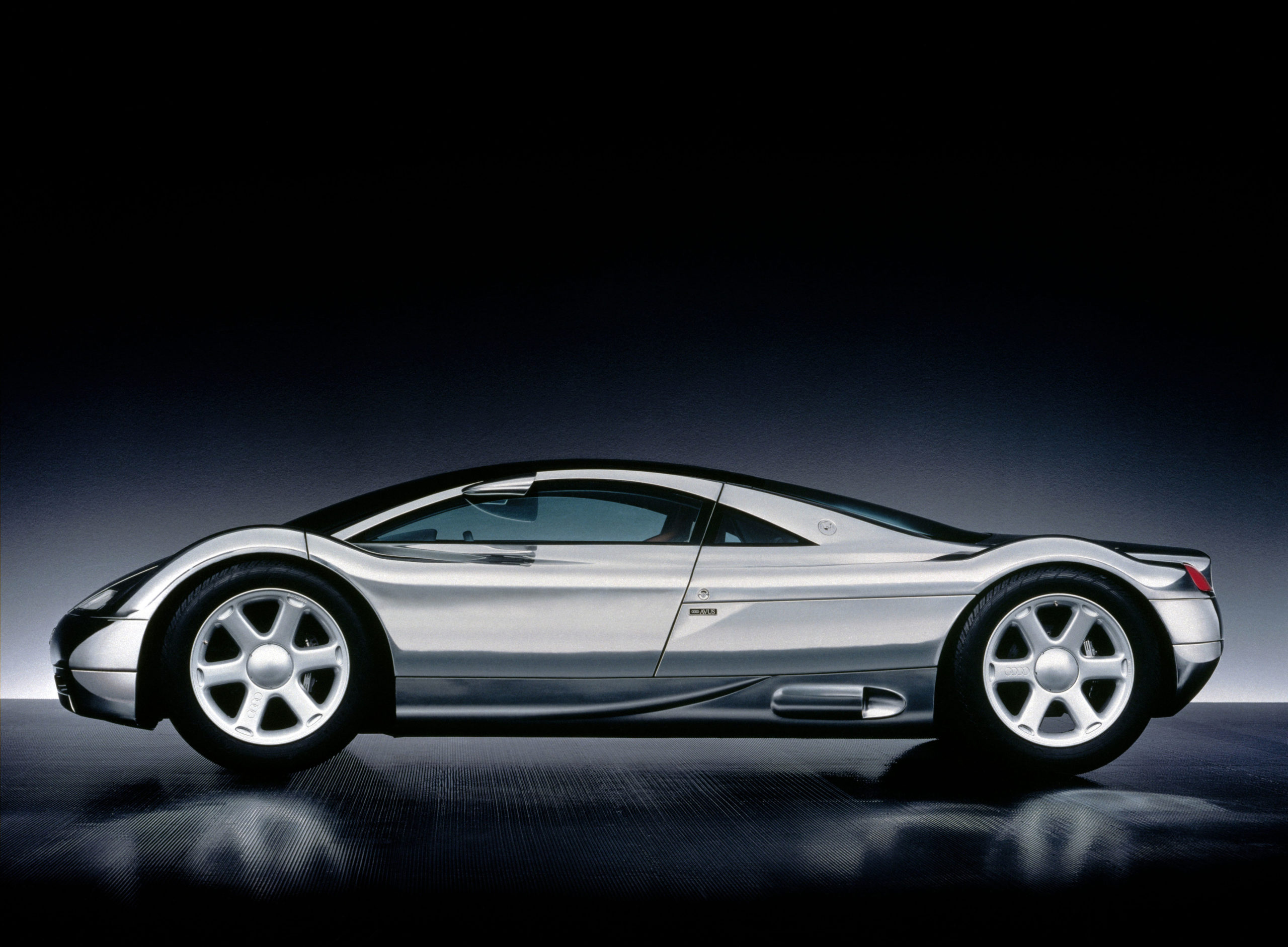
The message of innovation that Audi wanted to convey to the world left nothing to chance: the car was presented at the Tokyo Motor Show, in the country famous for its innovative aptitude. As if to say: we’re already here, where are you? And the message was absolutely spot on: in addition to this “cheeky” prototype named Avus, like the famous, very fast German circuit, just three years later the A8 was launched, the first car with an aluminium chassis that opened a tradition for the brand.
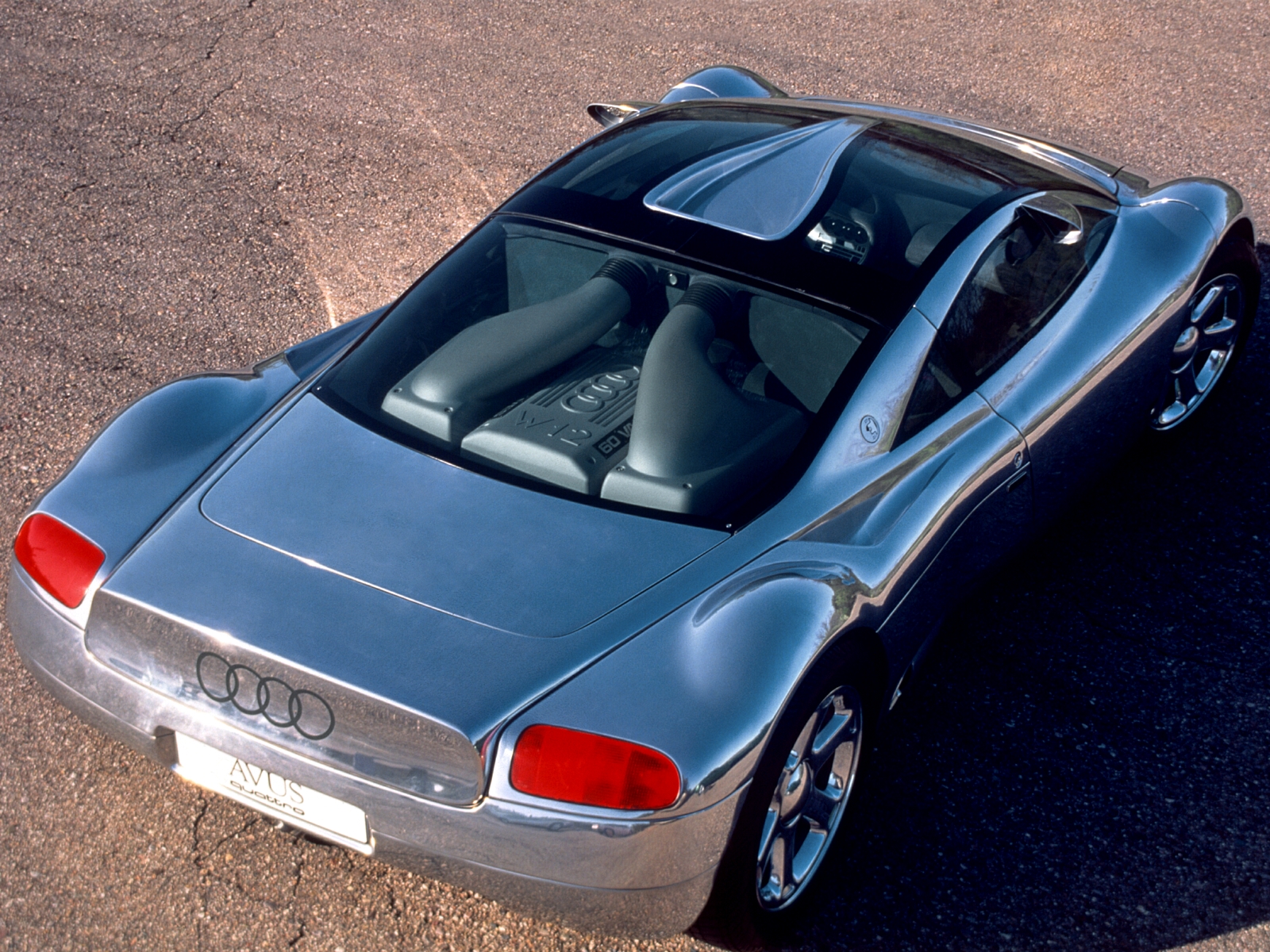
To give you an idea of just how advanced Audi’s aluminium programme was, consider that the second all-aluminium car to reach the market – chassis and bodywork, in addition to the engine – was the Ferrari 360 Modena that arrived five years later in 1999.
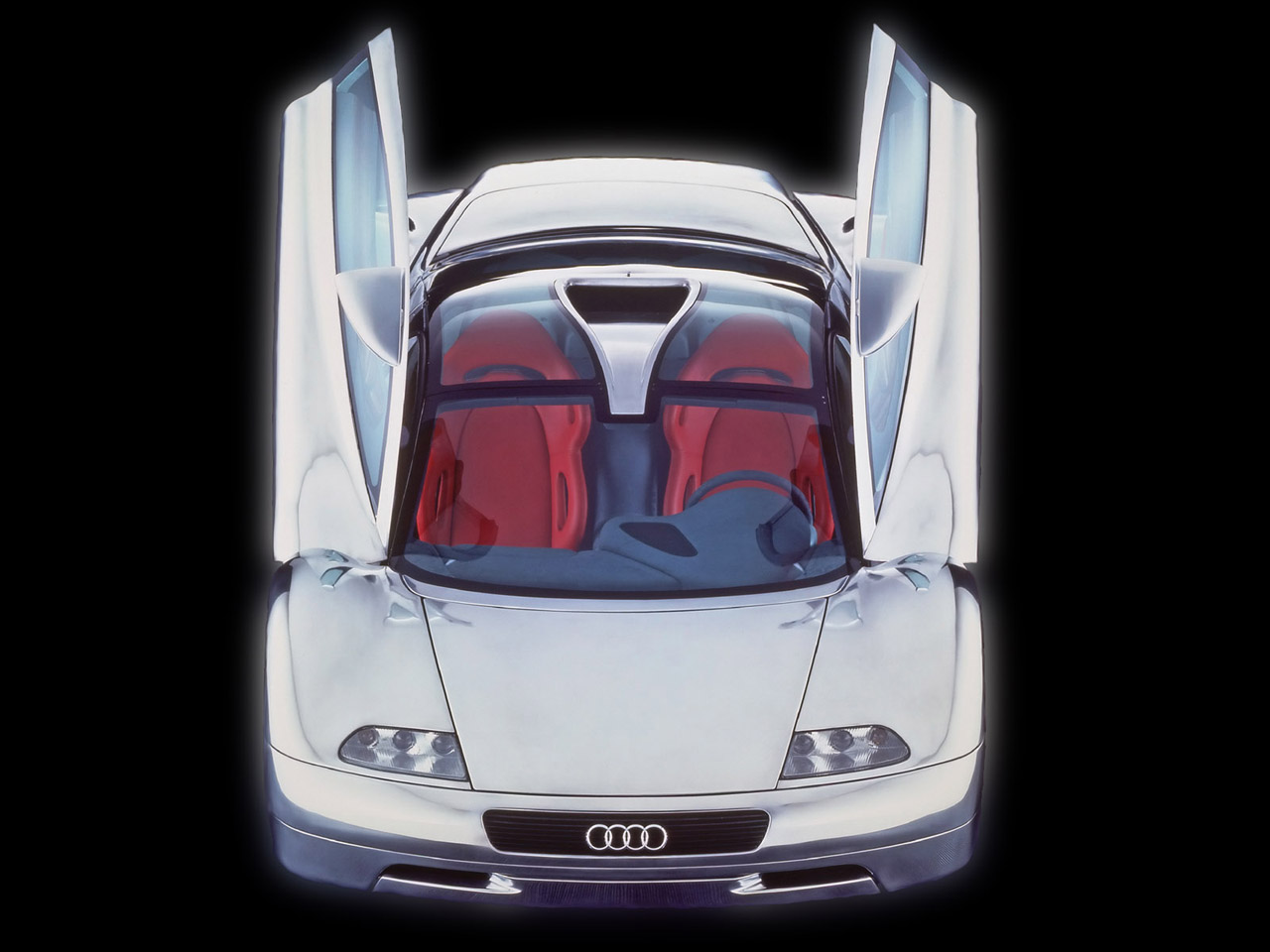
There is no detail of the Avus that doesn’t captivate the observer, beyond its curb weight of 1,250kg and its W12 engine producing over 500 horsepower, what’s particularly striking is the very forward driving position, the almost chiselled design of the metal shapes, left unpainted and pure, and the large technological showcase represented by the rear window and that proudly reveals the mechanics underneath.
Today, the question is: if they had produced 10 or 50 of them, what prices would they command at auctions today?
